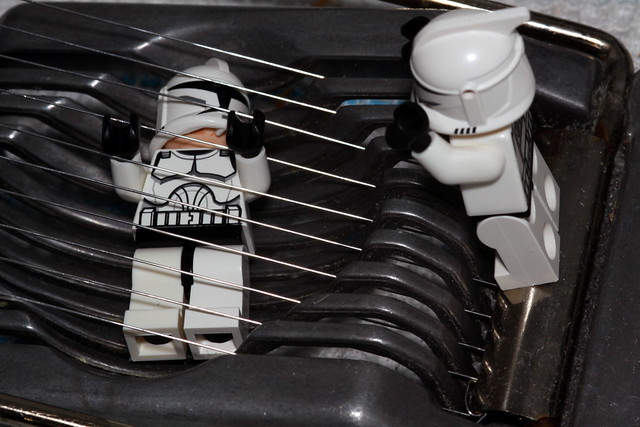
Who doesn’t want people to be safe in their homes? Writers! Injury and death are bread and butter for writer. But even if you aren’t a writer, you should read what follows to help protect yourself and your family from these dangers. I’ll start with the more innocuous or less common hazards. Consider the following.
Accidents

- Extension cords:
- Extension cords cause about 3300 residential fires each year, injuring or killing more than 300 people. If used continuously, insulation deteriorates fast. Even if not in use, extension cords left lying around can present a hanging or choking hazard for children.

- Clothes dryers:
- The most common clothes-dryer hazard is fire caused by lint accumulation and reduced airflow. They also present an entrapment danger for children.

- Mothballs:
- They are actually little balls of pesticide. They can cause a breakdown in red blood cells in children with certain genetic diseases (such as Glucose-6 Phosphate Dehydrogenase Deficiency). In addition, exposure can lead to nausea, vomiting, dizziness, fatigue, headaches, and eye and nasal irritation in humans; kidney and liver damage in pets.
- Mothballs can be huffed for a brief high caused by the dichlorobenzene or naphthalene, either of which can lead to addiction, brain damage, and death.
- NB, not as common in homes as they used to be.

- Humidifiers:
- Water left to sit in the humidifier for long periods of time become rife with mold spores, fungus, and bacteria.
- Ultrasonic humidifiers can be particularly dangerous, because they aerosolize and disperse as a mist everything that might be in water, including chemicals, minerals, bacteria, and mold.

- Pressed wood:
- Products made from hardwood plywood, particleboard, or fiberboard are often made with formaldehyde. Prolonged exposure can cause watery eyes, burns ins eyes and/or throat, asthma attacks, and cancer in animals and perhaps in humans.

- Carpeting:
- New carpet can emit potentially dangerous chemicals called volatile organic components. Any carpet can trap dust mites, pet dander, mold, dirt, etc., all of which are hard on respiratory systems.

- Lead:
- Lead poisoning occurs when lead builds up in the body, often over months or years. Even small amounts of lead can cause serious health problems.
- Lead paint was commonly used in homes built before 1978. Toys and furniture made in countries with less stringent health safety protocols may still be covered in lead paint.
- In very old houses (1920s and earlier), original plumbing may be made of lead, causing all the water coming into the house to be contaminated.
- Children younger than 6 years are especially vulnerable to lead poisoning, which can severely affect mental and physical development. At very high levels, lead poisoning can be fatal.

- Polycarbonate plastics:
- This is most dangerous when used to make food storage containers. The problem is the degradation of the chemical bisphenol (BPA) when it comes in contact with water. Health agencies have gone back and forth on the dangers of BPA, but studies have linked it to disruptions in the endocrine system and ultimately to cancer.

- Flame retardants, which seem like they are good things, actually have a downside: most contain toxins that have been linked to cancer, birth defects, diminished I.Q., and other problems.

- Space heaters:
- More than 25,000 home fires every year, especially those that don’t have an emergency tip-over feature and don’t have eating element guards. They are especially dangerous for children and pets.

- Houseplants:
- Many common varieties of houseplants, kept for air purification, beautification, or even medicinal purposes, are toxic to humans and animals in the wrong context. While most adults can be trusted not to eat the leaves, chew on the roots, or drink the water from random pots around the house, the same may not be true of children and pets.
- Philodendron, peace lilies, oleanders, pothos, and caladium are among the most common houseplants, and all are poisonous to humans and pets.

- Christmas trees:
- The combination of dry winter air, hot light bulbs, and paper or wooden ornaments make for a perfect storm of conflagration. Add in tinsel, paper-wrapped boxes, and the tendency of many families to leave the tree lights on overnight, and it’s surprising that there aren’t even more house fires and deaths every year.
- Fires caused by Christmas trees are among the most deadly house fires: approximately one out of every 34 home fires caused by a Christmas tree results in a death.
- Decorative or scented holiday candles can be quite deadly as well. The top three days for fires caused by unsafe candles are Christmas Eve, Christmas Day, and New Year’s Day.

- Other possibilities:
- Asbestos, carbon dioxide, radon, cuts, slip and fall accidents, carbon monoxide, unbalanced heavy furniture, stairs, throw rugs, icy walkways, mixing up the sugar and the rat poison…

Leading Causes of Unintentional Home Injury
Children and the elderly are at greatest risk.
- Falls: more than 40% of nonfatal home injuries; more than one third of unintentional home injury deaths.
- Poisoning: most unintentional home poisoning deaths are of adults and are caused by heroin, appetite suppressants, pain killers, and narcotics. Other frequent poisons are amphetamines, caffeine, antidepressants, alcohol, motor vehicle exhaust gas, etc.
- Children under 5 have the highest rates of non-fatal poisoning, often from exposure to substances not typically thoughts of as poisonous.
- “Hidden” poisons can be found in household and cleaning products; personal care and beauty products; medicines, vitamins, plants, and lead paint.
- Fires/burns: the third leading cause of unintentional home injury and death. Death rate is highest among senior citizens and —again—children under five. A huge percentage of burns are from hot water. Depending on water heater settings, tap water can be hot enough to cause second-degree burns.
- Choking and suffocation: the leading cause of death for infants under the age of one. An average of one child a month dies due to strangulation from a window chord.
- Drowning/submersion: 80% are children under age 4, mostly in bathtubs and swimming pools. Because they are top-heavy, a toddler can drown in a bucket, in as little as two inches of water.

Intentional Harm
People are more likely to be killed by people they know than by a stranger, and it will probably be in the victim’s home.
As of 2017, 12.3% of homicide victims were killed by family members, 28.0% were killed by someone they knew other than family, and only 9.7% were killed by strangers. In 50% of cases, the relationship between the victim and the offender were unknown. Chances are, at least some of those were family or acquaintance homicides.

Approximately 39% of victims were murdered during arguments or as a result of romantic triangles. Another 24.7% of murders were committed in conjunction with another crime such as rape, robbery, burglary, etc.
More than 72% of the known weapon homicides involved firearms, primarily handguns.
- Violence against women—Domestic violence is the #1 cause of injury to women, more than all the rapes, muggings, and car accidents in a given year.
- One out of every four women in the U.S. will be injured by a husband/lover during her lifetime.
- 64% of women killed each year are murdered by family or lovers.
- Violence against children—Calls to Child Protective Services received 3-4 million reports of alleged abuse in 2011: 79% neglect, 18% physical abuse, 9% sexual abuse.
- Babies under the age of one were assaulted most often. Of child victims in 2011, 82% were younger than four.
- Children in violent homes have sleeping, eating, and attention problems.
- Abused children are more withdrawn, anxious, and depressed than non-abused children.

Bottom Line For Writers: whether accidental or intentional, injury and death are fertile ground for tension, emotion, and upping the stakes.

